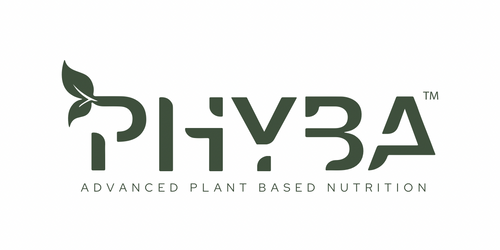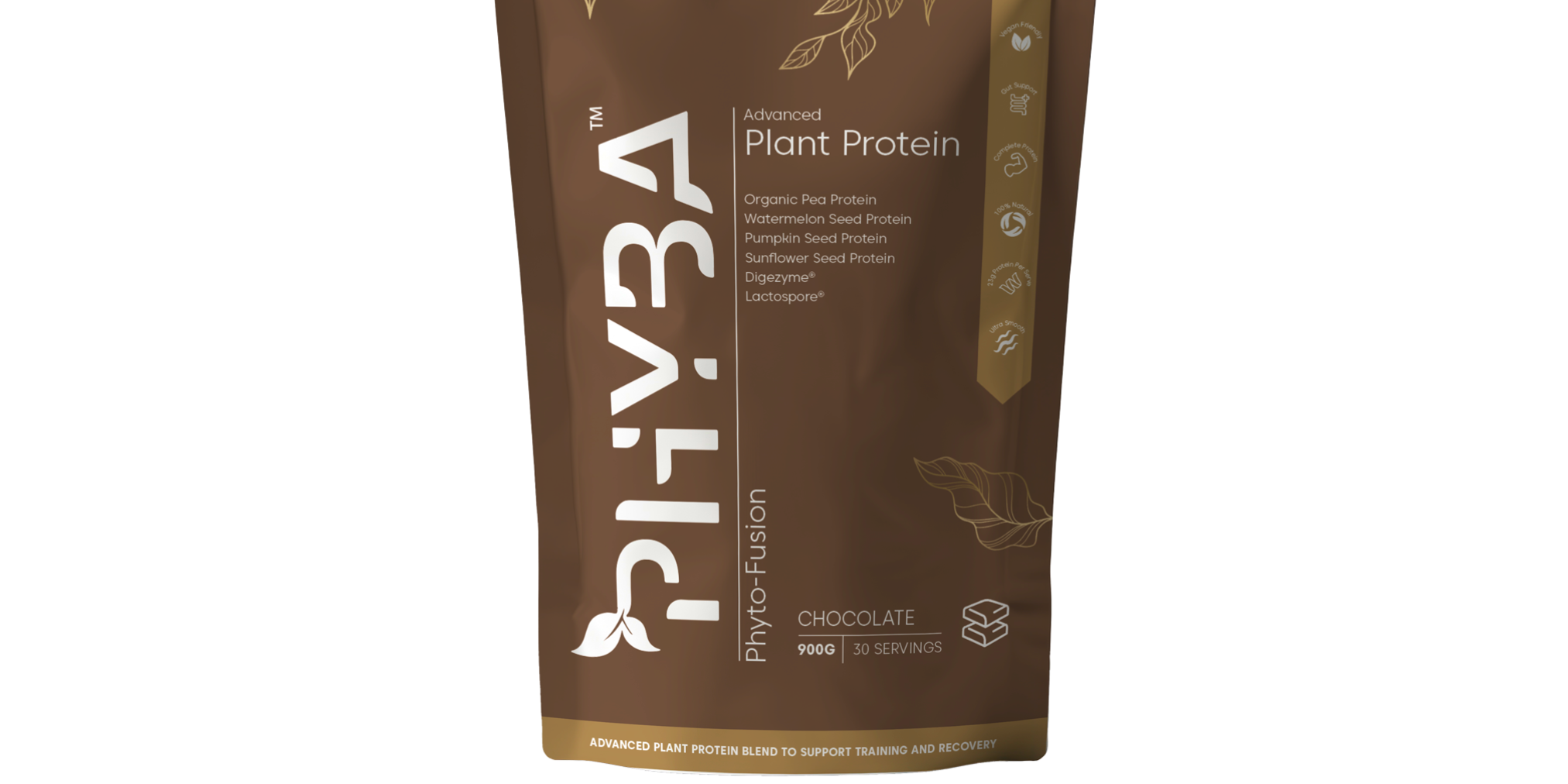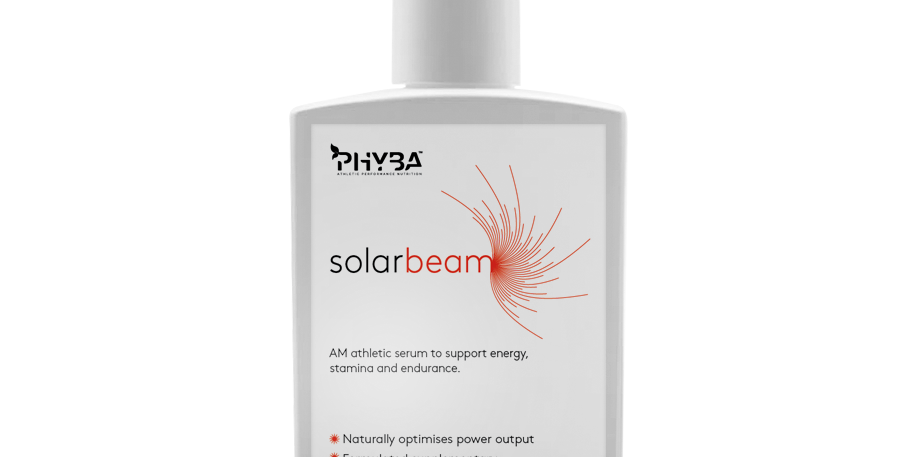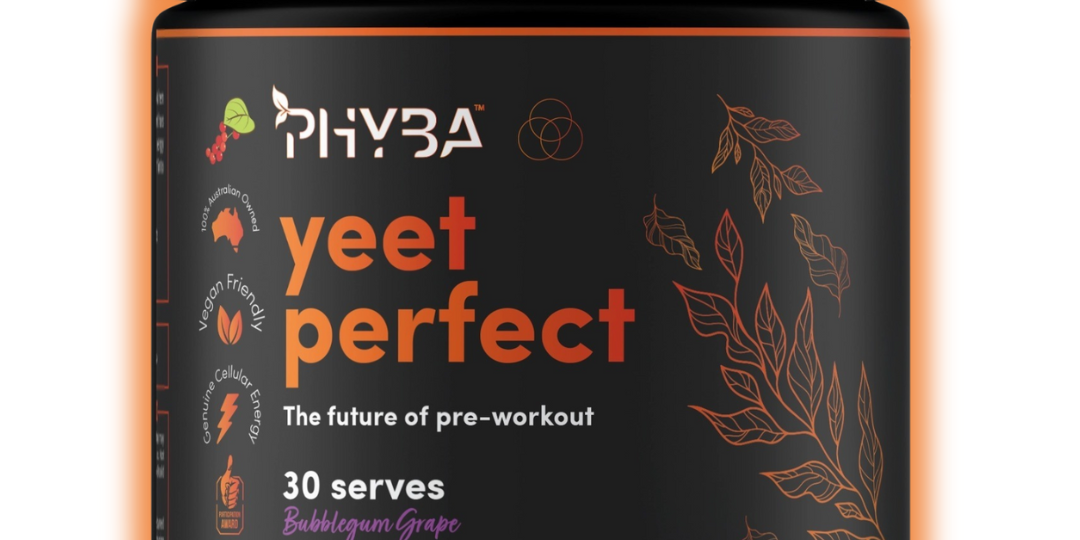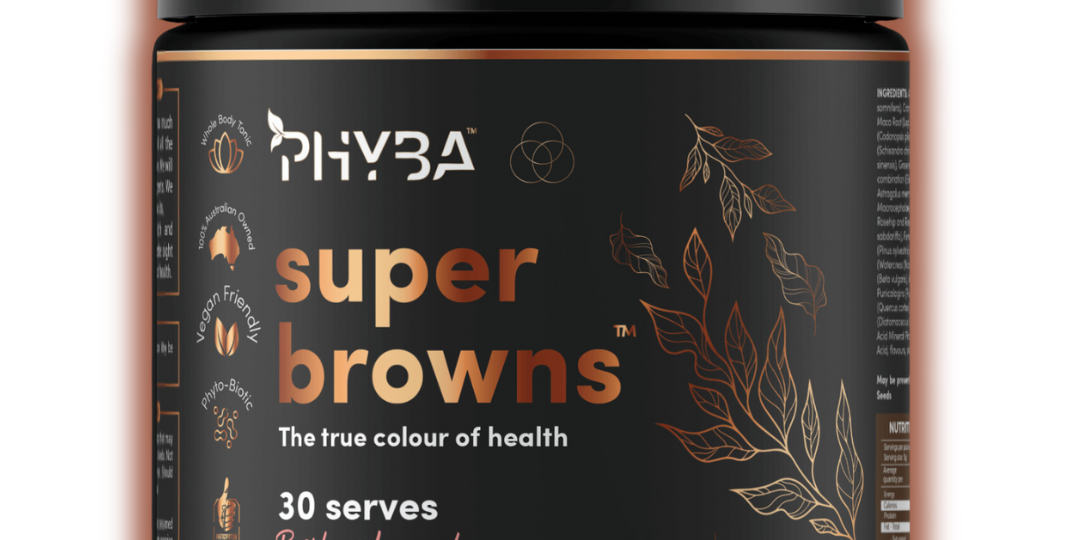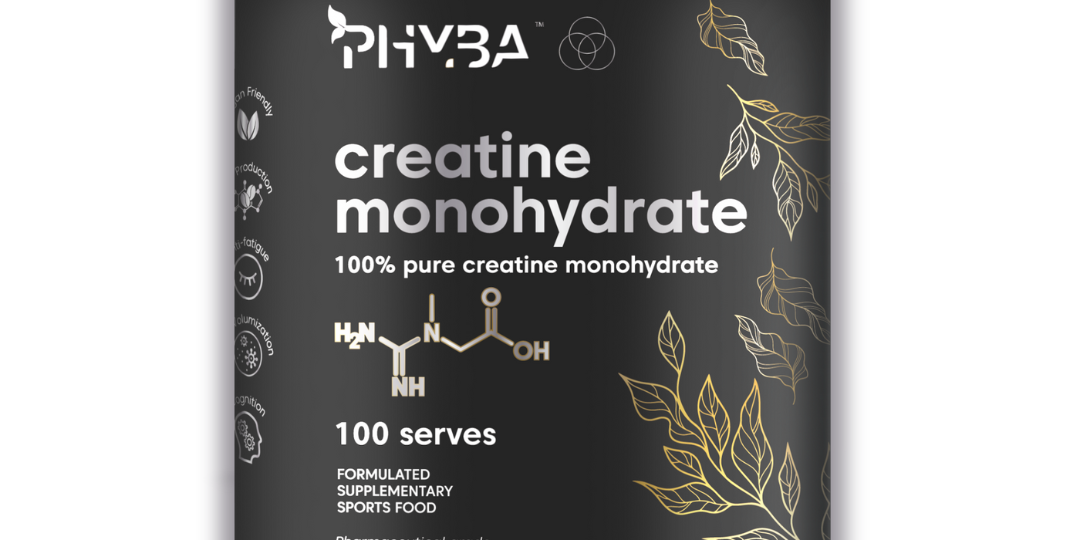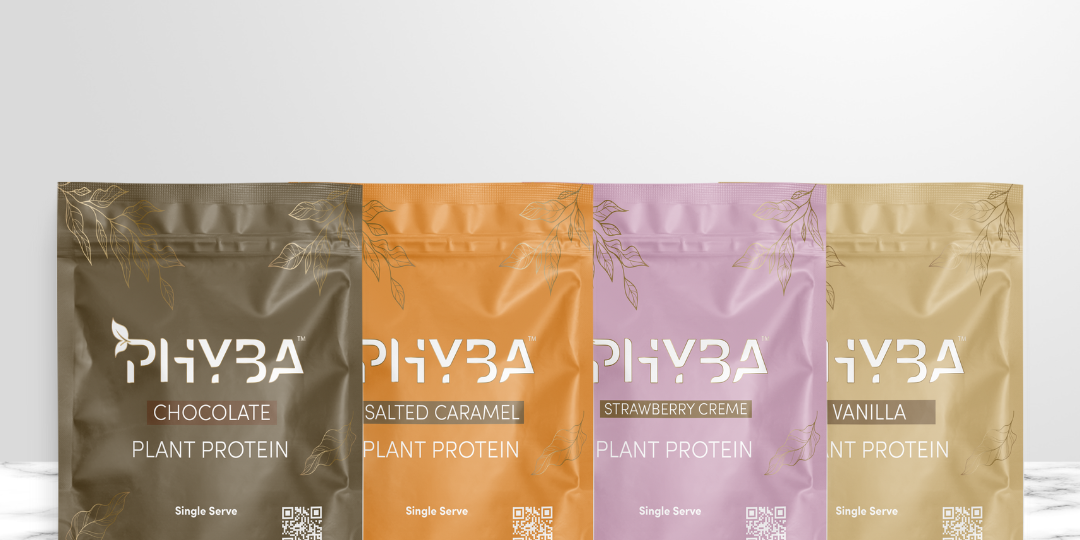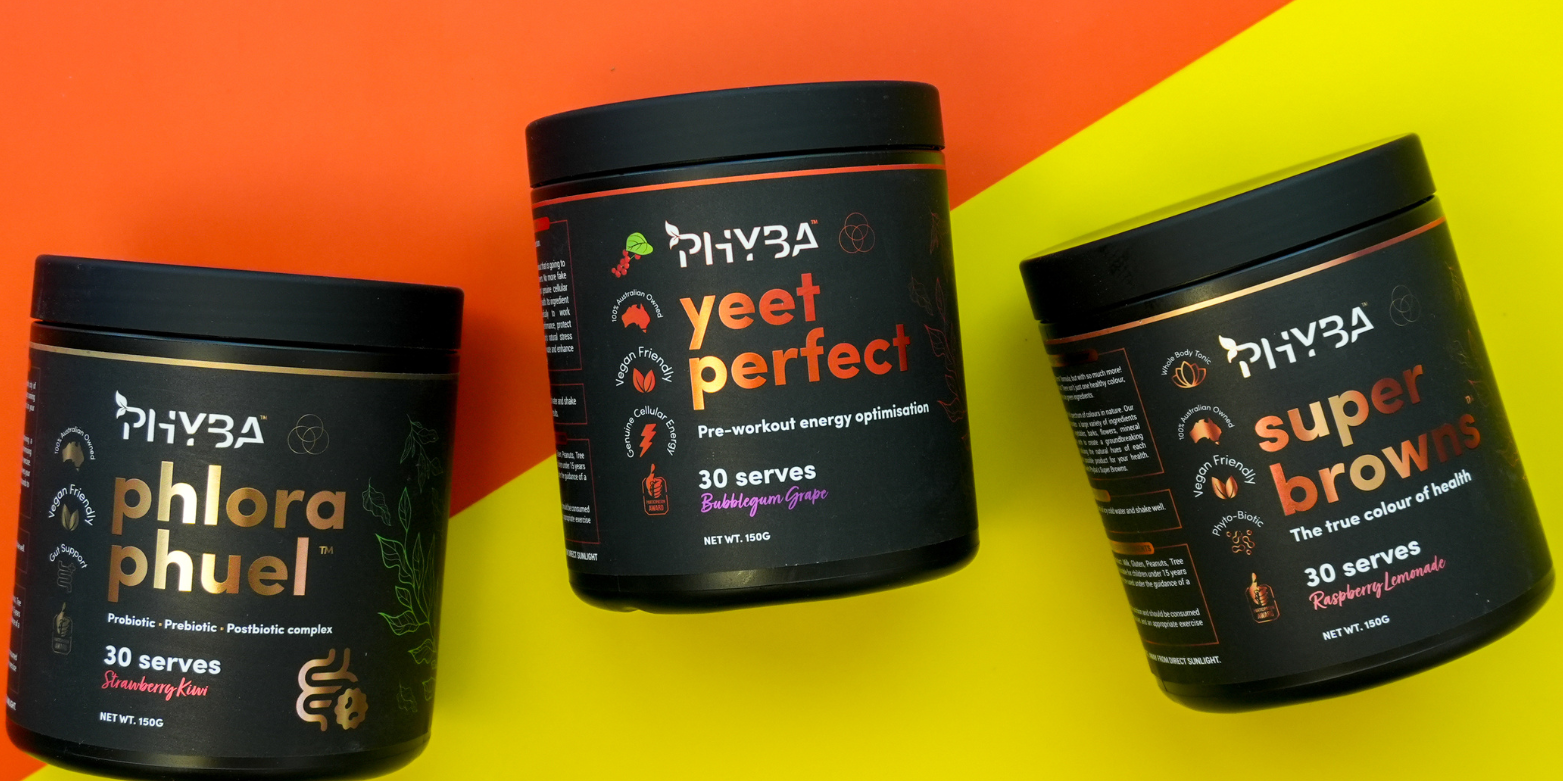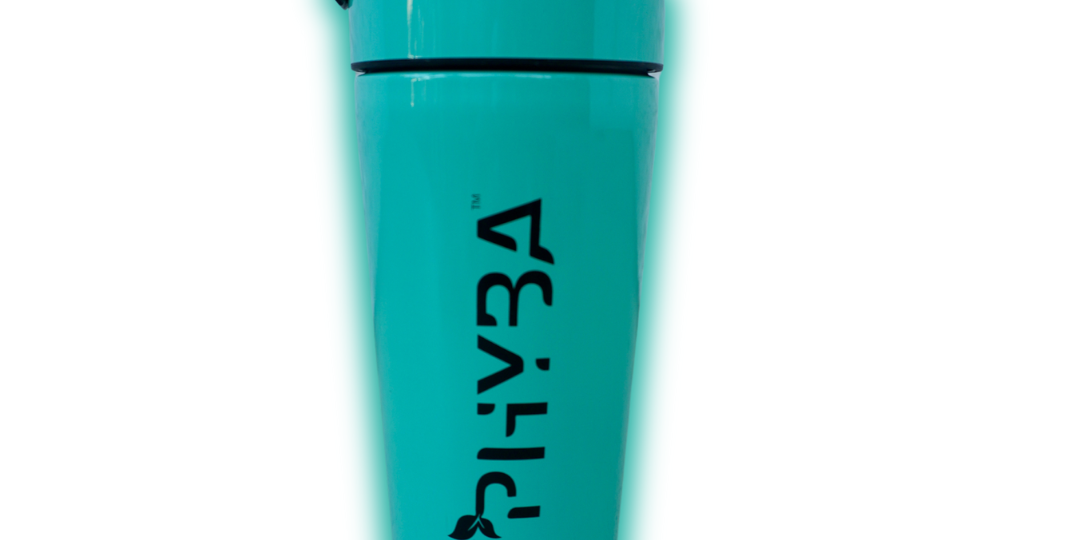Phlora Phuel Gut Health Formula – In-Depth Review
Phlora Phuel is a gut health supplement designed to bolster gut lining integrity and support a balanced microbiome. It combines prebiotic fibers (baobab fruit powder and glucomannan) with a proprietary Gut Matrix™ of targeted probiotic strains fermented on aloe vera and glucomannan, yielding additional postbiotic metabolites. This unique blend takes a comprehensive synbiotic approach – providing beneficial bacteria along with the fibers and fermentation compounds that help them thrive. In this review, we break down how each ingredient contributes to digestive health, examine the synergy between fiber, probiotics, and postbiotics, and offer a final verdict on the formula’s benefits.
Key Benefits of Phlora Phuel
• Reinforces Gut Lining Integrity: Rich in fiber and fermentation metabolites that nourish intestinal cells and support the mucus barrier, helping maintain a strong gut lining and normal permeability .
• Balances the Microbiome: Supplies proven probiotic strains and prebiotics to increase beneficial bacteria (like Lactobacillus and Bifidobacterium) while crowding out unwanted microbes, promoting a healthy microbial equilibrium .
• Boosts Short-Chain Fatty Acid Production: Encourages fermentation in the colon to generate short-chain fatty acids (SCFAs) such as acetate, propionate, and butyrate – key postbiotic compounds that fuel gut cells and modulate inflammation .
• Supports Digestive Function and Regularity: The high soluble fiber content (from baobab and glucomannan) aids digestion by bulking stool and stimulating intestinal motility, while the probiotic matrix can improve nutrient breakdown and alleviate minor gastrointestinal discomfort in an evidence-informed manner.
Each of these benefits is rooted in Phlora Phuel’s science-backed ingredients, which we detail below.
Ingredient Breakdown and Gut Health Mechanisms
Baobab Fruit Powder – Prebiotic Fiber Superfood (8700 mg)
Baobab fruit pulp powder is an exceptionally fiber-rich ingredient known for its prebiotic properties. Composed largely of pectic polysaccharides, baobab resists digestion in the upper GI tract and reaches the colon where gut microbes ferment it. Research shows baobab fiber is selectively utilized by beneficial gut bacteria, leading to increased production of health-promoting SCFAs . In vitro studies found baobab fermentation significantly boosts levels of acetate and propionate, with a modest rise in butyrate, while fostering growth of Bifidobacteria and Lactobacilli in some individuals .
This SCFA production is highly beneficial – acetate and propionate help maintain microbial balance and serve as energy sources for the liver and muscles, and butyrate is the preferred fuel for colon lining cells . By generating these postbiotic acids, baobab helps acidify the colon (lowering pH) which can inhibit pathogenic bacteria and favor friendly flora . Additionally, the fermentable fiber and accompanying polyphenols in baobab may enhance the gut’s mucosal barrier. Indeed, baobab has been noted to support gut barrier health by increasing mucus production and reducing intestinal permeability, thereby strengthening the intestinal wall’s defenses .
In summary, Baobab acts as a prebiotic powerhouse: feeding your microbiome, increasing beneficial bacteria and SCFA output, and indirectly fortifying the gut lining. Its high fiber content also adds bulk to stools, supporting regular bowel movements and gentle detoxification as a natural bonus.
Glucomannan – Soluble Fiber for Microbiome & Satiety (250 mg)
Glucomannan, derived from konjac root, is a water-soluble fiber famous for its gelling properties and digestive benefits. In Phlora Phuel, glucomannan serves as both a prebiotic substrate and a functional fiber. Like baobab, glucomannan resists human digestion and is fermented by colonic bacteria. This fermentation process yields SCFAs – including notable amounts of butyrate when glucomannan is provided in certain forms . Studies on konjac glucomannan show it selectively stimulates beneficial gut microbes (such as Bifidobacterium and Lactobacillus) and produces a favorable SCFA profile, similar to classic prebiotics like inulin .
One remarkable benefit of glucomannan fermentation is its impact on the gut environment: it produces acids that lower colonic pH, creating conditions that suppress harmful bacteria. Research on glucomannan notes it can hinder pathogens like E. coli by increasing SCFA levels and acidity in the colon . In parallel, glucomannan appears to nurture microbes that support the gut barrier. A 2024 study found that glucomannan supplementation in mice promoted the growth of Bacteroides ovatus, a bacterium which in turn improved intestinal barrier integrity and reduced inflammation . This was linked to microbial metabolites (like indole compounds) that activate host pathways strengthening the gut lining .
From a functional standpoint, glucomannan’s ability to absorb water and form a viscous gel can also aid digestion by slowing gastric emptying and promoting satiety, potentially easing the passage of stool and helping regulate bowel habits. While Phlora Phuel uses a modest dose, it is enough to contribute to daily soluble fiber intake and synergize with baobab’s fiber. Overall, glucomannan supports a healthier microbiome and gut lining by feeding friendly bacteria, fueling SCFA production, and helping keep the intestinal barrier robust.
Gut Matrix™ – Probiotic & Postbiotic Blend (25 mg)
Phlora Phuel’s Gut Matrix™ is a proprietary fermented blend that provides targeted probiotic strains, a prebiotic base of aloe vera and glucomannan, plus postbiotic metabolites from the fermentation process. This triad is formulated to deliver live beneficial bacteria along with the “food” and beneficial compounds they rely on – essentially a mini fermented ecosystem in each dose. The blend includes three well-studied probiotic species: Lactobacillus plantarum, Lactobacillus rhamnosus, and Bifidobacterium lactis. Aloe vera is included as a soothing prebiotic substrate, and the fermentation of aloe and fibers by these bacteria produces additional bioactive byproducts (postbiotics) that further enhance gut health.
Some highlights of the Gut Matrix™ components:
• Lactobacillus plantarum: A resilient lactic acid bacterium commonly found in fermented foods. L. plantarum can colonize the intestines transiently and exerts multiple benefits. It produces lactic acid and other organic acids, lowering gut pH to inhibit pathogens. Moreover, L. plantarum has been shown to fortify the intestinal barrier – in studies it helped strengthen tight junction proteins (like occludin and ZO-1) and prevented increases in gut permeability under stress . It also modulates the microbiota favorably; for instance, L. plantarum supplementation increased levels of butyrate-producing bacteria (such as Faecalibacterium) in the colon, leading to higher butyrate and acetate levels . By reinforcing the gut lining and supporting butyrate production indirectly, L. plantarum plays a key role in gut integrity and immune balance.
• Lactobacillus rhamnosus: Notably including strains like L. rhamnosus GG, this species is one of the most researched probiotics. L. rhamnosus is renowned for supporting gut barrier function and immune modulation. It can adhere to intestinal mucus and epithelial cells, forming a protective shield. Research demonstrates that Lactobacillus rhamnosus can enhance mucous layer thickness and tight junction integrity – for example, L. rhamnosus GG increased production of mucin (Muc2) by goblet cells and normalized gut permeability in a mouse model . It also reduced inflammatory cytokines in the gut, indicating a calming effect on the gut’s immune response . Users often take L. rhamnosus for diarrhea prevention and overall digestive resilience; in Phlora Phuel it helps maintain a resilient gut lining and a balanced immune tone in the GI tract.
• Bifidobacterium lactis: A friendly bifidobacteria strain common in dairy ferments or cabbage ferments and infant gut flora, B. lactis contributes to digestion and gut health in several ways. It predominantly produces acetate and lactate, which nourish other beneficial microbes and acidify the colon (discouraging pathogens). B. lactis is known to support bowel regularity and has been studied for improving stool frequency in adults. Importantly, it can also influence the broader microbial community: supplementation with B. lactis has been shown to promote the growth of other SCFA-producing bacteria such as Faecalibacterium (a major butyrate producer) . By boosting these butyrate-producers and contributing acetate as a substrate, B. lactis helps increase butyrate levels indirectly – supporting colon cell energy needs and reinforcing barrier integrity. Some in vitro research even suggests B. lactis can strengthen intestinal cell junctions and reduce permeability in cell models . Overall, B. lactis aids a harmonious gut environment and complements the Lactobacilli in balancing the microbiome.
• Aloe Vera (fermented substrate): Aloe vera gel is rich in polysaccharides (like acemannan) that act as prebiotics and soothing agents in the gut. In the Gut Matrix™, aloe vera combined with glucomannan feeds the probiotics during fermentation, resulting in a final product containing aloe’s beneficial compounds in fermented form. Aloe is gentle on the digestive tract and known for its anti-inflammatory and mucilage properties; it may help soothe the gut lining and support healing. Studies indicate that aloe vera polysaccharides are fermentable by gut bacteria and can increase SCFA production while producing relatively low gas . Thus, including aloe as a fermentative base not only provides the probiotics with a growth medium but also adds a soothing prebiotic that continues to feed native gut microbes in the consumer. The manufacturer notes that using aloe vera alongside probiotics can have synergistic effects, enhancing overall digestive health benefits .
• Postbiotic Metabolites: Because the Gut Matrix™ is created through fermentation, the final powder is enriched with postbiotics – the bioactive compounds produced by the probiotic cultures. These include organic acids (like lactic acid, acetic acid), enzymes, peptides, and potentially short-chain fatty acids or polysaccharide fragments from the aloe. Postbiotics are thought to confer many of the benefits of live probiotics even after digestion, by directly interacting with our gut lining and immune cells. For example, probiotic-derived peptides and cell fragments can modulate immune responses, and lactic acid helps maintain an acidic, balanced colonic pH. Notably, short-chain fatty acids themselves are considered key postbiotics that help strengthen the gut barrier and nurture gut microbes . By delivering some of these compounds pre-formed, the Gut Matrix™ may provide more immediate support to the gut environment even before the probiotics fully colonize. Think of it as a three-pronged approach: beneficial bacteria, the food to keep them active, and the beneficial molecules they naturally create.
In combination, this Gut Matrix™ aims to seed the gut with beneficial bacteria and create a hospitable environment for them to thrive. The presence of prebiotic (aloe, fiber) in the blend means the probiotics are not going in alone – they have nutrients to utilize, which can improve their survival through the digestive tract and activity in the colon. Meanwhile, the postbiotic components start working on gut physiology right away. This synergistic design epitomizes a synbiotic (probiotic + prebiotic) strategy for gut health .
Synergy of Fiber, Probiotics, and Postbiotics
A standout aspect of Phlora Phuel is how its ingredients work in synergy to amplify gut health benefits. Rather than relying on a single mechanism, it combines multiple complementary actions:
• Prebiotics feeding Probiotics: The baobab and glucomannan fibers (plus aloe polysaccharides) serve as fuel for both the supplemented probiotics and your resident good bacteria. This selective feeding leads to greater proliferation of beneficial microbes. Essentially, Phlora Phuel not only introduces helpful bacteria into the gut, but also gives them (and existing commensals) the resources to flourish. This can result in a more substantial shift in microbiome composition than probiotics alone, as the prebiotics help beneficial strains outcompete others. The concept is akin to a synbiotic effect, where the combination yields a better outcome than either component alone .
• Enhanced SCFA Production: The synergy is evident in short-chain fatty acid generation. Soluble fibers from baobab and glucomannan are fermented by both the supplemented strains and native fermenters, leading to robust SCFA output (acetate, propionate, and butyrate). Meanwhile, Lactobacilli produce lactate which certain other colon bacteria can convert into butyrate – a cross-feeding interaction that’s encouraged by having a diversity of fibers and strains present . The net result is higher levels of SCFAs, which create a slightly acidic, low-inflammatory colonic environment. These SCFAs are crucial for gut integrity (especially butyrate, which nourishes colon cells and stimulates mucus production) . By boosting SCFAs through multiple pathways, Phlora Phuel helps maintain a well-fed, well-protected intestinal lining.
• Microbial Balance and Pathogen Defense: A fiber-and-probiotic combo also synergizes in keeping harmful microbes at bay. As friendly bacteria grow and produce acids, the gut environment becomes unfriendly to opportunistic pathogens. For instance, the fermentation acids can lower intestinal pH enough to inhibit E. coli and other undesirables . Probiotics like L. rhamnosus and B. lactis also physically displace or crowd out pathogens by competing for adhesion sites and nutrients. Moreover, some probiotics produce natural antimicrobial compounds (like bacteriocins or peroxides) that suppress competitors. Phlora Phuel’s multi-ingredient approach ensures there is constant competitive pressure against harmful bacteria – via direct competition from probiotics, and indirect inhibition through prebiotic-fueled acidification.
• Gut Barrier Support: All components converge to support the intestinal barrier. Fermentable fibers increase butyrate and other metabolites that directly signal gut epithelial cells to strengthen tight junctions and produce protective mucus . Probiotic strains like L. plantarum and L. rhamnosus actively induce tighter junction protein expression and mucus secretion . Aloe vera adds a soothing, anti-inflammatory influence that may further reduce irritation of the gut wall. This three-way support means Phlora Phuel is well-equipped to help maintain gut integrity, an important factor for overall health and immune function. Users may experience this as less gut irritability and improved tolerance to various foods.
In essence, Phlora Phuel creates a virtuous cycle in the gut: fiber feeds microbes -> microbes produce beneficial metabolites -> these metabolites improve the environment and gut structure -> which in turn supports more good microbes. Each ingredient reinforces the others’ effects. This holistic design is why the formula can credibly claim to bolster gut integrity, microbial balance, and digestive wellness simultaneously, without overstepping into hype. All the mechanisms are grounded in established prebiotic/probiotic science.
Overall, for those looking to improve their gut health, Phlora Phuel offers a robust, evidence-informed option. Its combination of a fiber powerhouse, targeted probiotics, and beneficial postbiotics creates a synergistic effect that aligns with current scientific understanding of how to foster a resilient gut ecosystem. In conclusion, Phlora Phuel is a professionally formulated gut health supplement that earns high marks for its ingredient profile and mechanism of action. It represents a holistic strategy to digestive health that is likely to benefit individuals seeking to optimise their gut integrity and microbiome function – all while staying grounded in credible nutritional science .
